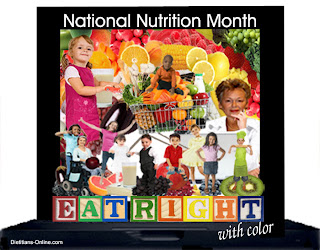Eat Right with Colors explores the health benefits associated with eating foods of many colors. Including color diversity in your meals and food choices enhances your intake of a wide range of nutrients.
Red and Pink Foods
Apples, Beets, Cayenne, Cherries, Cranberries, Guava, Kidney Beans, Papaya, Pink Beans, Pink/Red Grapefruit, Pomegranates, Radicchio, Radishes, Raspberries, Red Bell Peppers, Red Cabbages, Red Chili Peppers, Red Corn, Red Currants, Red Grapes, Red Onions, Red Pears, Red Peppers, Red Plums, Red Potatoes, Red Tomatoes, Rhubarb, Strawberries, Tomatoes, Watermelons
Green Foods
Alfalfa, Artichokes, Arugula, Asparagus, Avocado, Bok Choy, Broccoli, Broccoli rabe, Brussels Sprouts, Celery, Chives, Collard Greens, Cucumbers, Dandelion Greens, Edamame, Endive, Fennel, Green apples, Green Beans, Green cabbage, Green Grapes, Green Olives, Green Onion, Green Pears, Green Peas, Green Pepper, Green Tomatoes, Honeydew, Kale, Kiwi, Leeks, Lettuce, Limes, Mint, Okra, Oregano, Parsley, Pistachios, Snow Peas, Spinach, Sugar snap peas, Swiss Chard, Tarragon, Tomatillo, Wasabi, Watercress, Zucchini
Blue and Purple Foods
Blue Grapes, Blue and Purple Potatoes, Blueberries, Dried Plums, Plums, Eggplant, Pomegranates, Elderberries, Juniper Berries, Kelp (Seaweed), Purple Belgian Endive, Purple Cabbage, Purple Figs
Yellow and Orange Foods
Apricots, Bananas, Butternut Squash, Cantaloupe, Carrots, Cheddar Cheese, Citrus Fruits, Clementines, Corn, Creamsicle, Garbanzo Beans, Golden Apples, Golden Flax Seed, Golden Raisins, Grapefruit, Honey, Lemon, Lemongrass, Mandarin Oranges, Mangoes, Nectarines, Orange Jello, Orange Peppers, Orange Tomatoes, Oranges, Papaya, Parsnips, Peaches, Pears, Persimmons, Pineapple, Pumpkin, Rutabagas, Saffron, Salmon, Spaghetti Squash, Squash Blossoms, Sweet Corn, Sweet Potatoes, Tangerines, Whole Grains, Yams, Yellow Apples, Yellow Beans, Yellow Peppers, Yellow Summer Squash, Yellow Wax Beans
White and Black Foods
White: Cauliflower, Coconut, Garlic, Ginger, Green Onions, Scallions, Horseradish, Jicama, Kohlrabi, Leeks, Millet, Mushrooms, Onions, Parsnips, Quinoa, Shallots, Soy Products, Sunflower Seeds, Tofu, Turnips, White Beans, White Corn, White Sesame Seeds
Black: Black Beans, Black Cherries, Black Currants, Black Mushrooms, Black Olives, Black Quinoa, Black Raspberry, Black Rice, Black Sesame Seeds, Black Soybeans, Blackberries, Boysenberries, Prunes, Raisins, Seaweeds, Tamari (Soy Sauce)
Wellness News employs adults with "Special Needs" (Cerebral Palsy, Autism, Down Syndrome, Muscular Dystrophy). Many of the photographs are available for purchase, with the proceeds going to special needs adults. Contact Dr. Sandra Frank for additional information (recipenews@gmail.com).
Prepared by
Sandra Frank, Ed.D, RD, LDN
Jake Frank
Michelle Canazaro
John Gargiullo
Sandra Frank, Ed.D, RD, LDN
Jake Frank
Michelle Canazaro
John Gargiullo
































